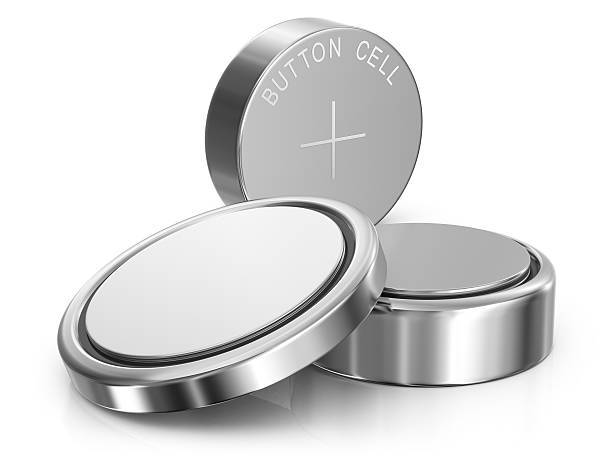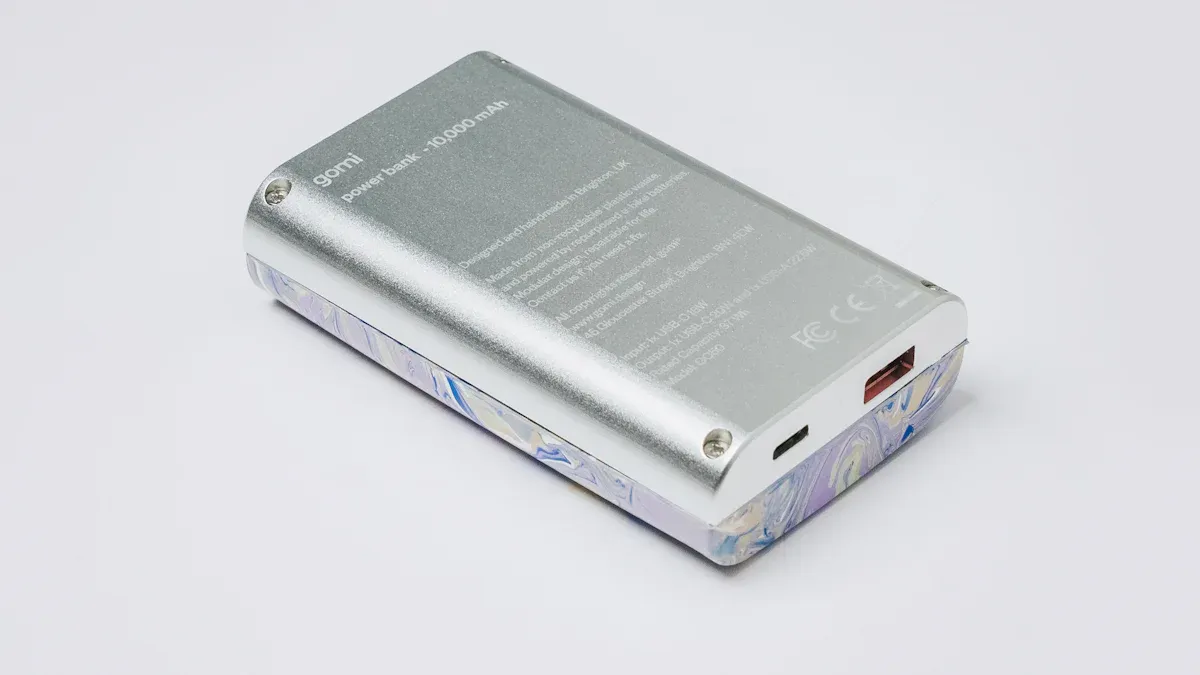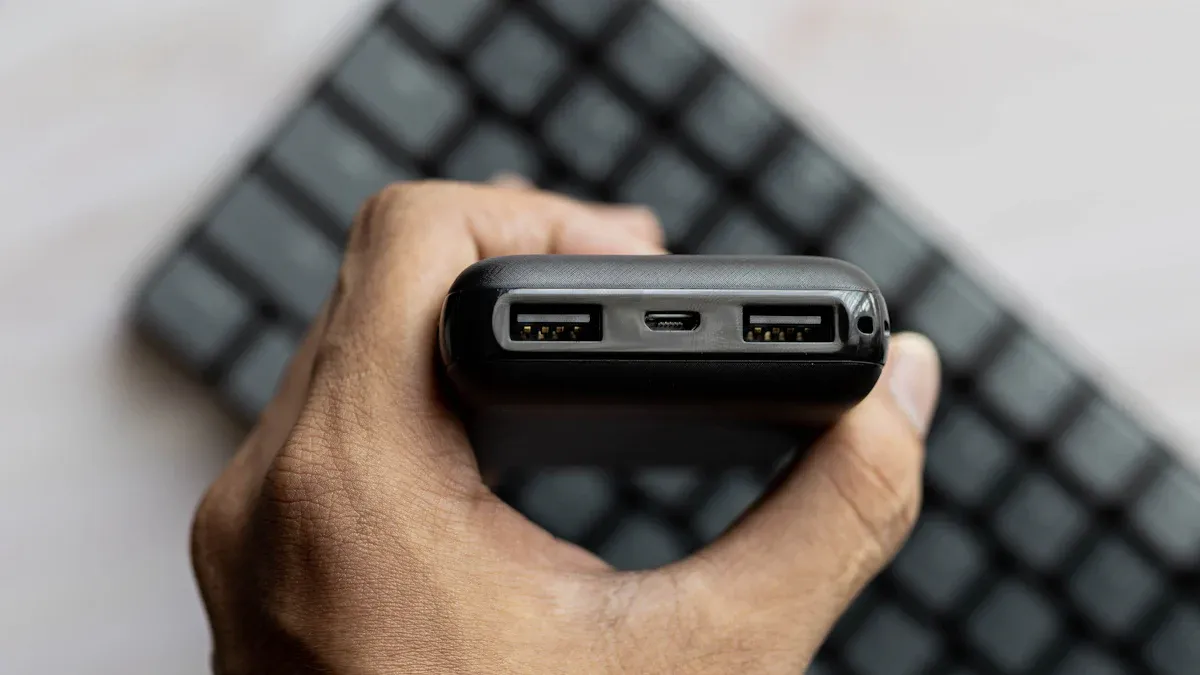CR1620 Battery Uses in Modern Electronics

The CR1620 battery is a compact and efficient power source designed for small electronic devices. With its lithium-based composition, it delivers reliable performance in various applications. This button cell battery is known for its durability and energy efficiency, making it a preferred choice for portable gadgets. The CR1620 battery 3V offers consistent voltage output, ensuring dependable operation in critical devices. Its lightweight design allows it to power watches, car remotes, and other compact electronics without adding bulk. The CR1620 plays a vital role in modern technology by providing long-lasting energy solutions.
Key Takeaways
The CR1620 battery is small and works well for tiny gadgets like watches and car remotes.
It lasts up to 10 years, so you won’t need to replace it often.
Keep CR1620 batteries in a cool and dry spot to make them last longer.
Make sure the CR1620 battery fits your device before replacing it for the best performance.
Recycle CR1620 batteries properly to help keep the environment safe.
Overview of the CR1620 Battery
Key Features and Specifications
The CR1620 battery is a lithium coin cell battery designed for compact electronic devices. Its small size and lightweight construction make it ideal for applications requiring portability. This button battery delivers a rated voltage of 3V, ensuring consistent power output for reliable device performance.
The technical specifications of the CR1620 battery highlight its efficiency and durability:
Parameter | Value |
|---|---|
Voltage - Rated | 3V |
Diameter | 16mm |
Weight | 1.3g |
Operating Temperature (Min) | -30°C |
Operating Temperature (Max) | 70°C |
Discharge Rate | 100μA |
These features enable the CR1620 to function effectively in a wide range of environments, from cold to moderately hot conditions. Its low discharge rate ensures long-lasting performance, making it a dependable choice for small devices.
Benefits of the Lithium CR1620 Battery
The lithium CR1620 battery offers several advantages that make it a preferred option for modern electronics. Its lithium-based composition provides high energy density, allowing it to deliver consistent power over extended periods. This characteristic is particularly beneficial for devices like watches and car remotes, which require long-lasting energy solutions.
Another key benefit is its long shelf life. The CR1620 battery can remain functional for up to 10 years when stored properly. This longevity reduces the need for frequent replacements, saving both time and money. Additionally, its compact design ensures compatibility with a variety of devices without adding unnecessary bulk.
Tip: To maximize the benefits of the CR1620 battery, store it in a cool, dry place and avoid exposure to extreme temperatures.
Common Characteristics of the CR1620
The CR1620 battery shares several common characteristics with other lithium non-rechargeable button batteries. Its diameter measures 16.0 mm, while its thickness is 2.0 mm, making it one of the smallest button batteries available. It operates at a standard voltage of 3 volts and offers a capacity ranging from 70 to 100 mAh.
Characteristic | Details |
|---|---|
Diameter | 16.0 mm |
Thickness | 2.0 mm |
Voltage | 3 volts |
Capacity | 70 to 100 mAh |
Discharge Rate | Standard discharge current is around 0.1 mA |
Shelf Life | Up to 10 years |
These characteristics make the CR1620 battery suitable for devices requiring low power consumption and compact designs. Its reliability and efficiency have established it as a trusted power source in modern electronics.
Applications of the CR1620 Battery

Personal Devices
The CR1620 battery is a popular choice for powering personal devices due to its compact size and reliable performance. Watches, both analog and digital, frequently use this battery for precise timekeeping. Its long-lasting energy output ensures minimal replacements, making it ideal for devices requiring consistent operation.
Calculators also benefit from the CR1620’s efficiency. Whether handheld or desktop models, these devices rely on the battery to deliver uninterrupted functionality. Additionally, small electronic gadgets like LED flashlights and digital thermometers utilize the CR1620 for their lightweight design and dependable power.
Note: The CR1620 battery’s low discharge rate makes it particularly suitable for portable electronic devices that demand extended battery life.
Consumer Electronics
The CR1620 battery plays a vital role in consumer electronics, especially in remote controls and automotive key fobs. Remote controls for televisions and other devices depend on the battery for seamless wireless operation. Its compact design fits perfectly into these devices, ensuring convenience without compromising performance.
Automotive key fobs rely on the CR1620 for remote locking and starting functions. The battery’s durability and energy efficiency make it a trusted choice for these critical applications. Motherboards also use the CR1620 as a backup power source for BIOS settings, preserving essential system configurations during power outages.
Tip: When replacing the CR1620 in consumer electronics, verify the voltage and size compatibility to ensure optimal performance.
Specialized Uses in Medical and Security Devices
Medical devices often incorporate the CR1620 battery for its reliability and long shelf life. Monitoring devices and glucose meters depend on the battery to provide accurate readings and consistent operation. Its ability to function in a wide range of temperatures makes it suitable for medical applications requiring precision and stability.
In security systems, the CR1620 battery powers devices like wireless sensors and alarms. These applications demand dependable energy sources to ensure uninterrupted operation. The battery’s compact size and high energy density make it an excellent choice for devices requiring portability and reliability.
Callout: The CR1620 battery’s versatility extends to specialized fields, offering dependable power solutions for critical devices in medical and security systems.
Comparing the CR1620 to Similar Batteries

CR1620 vs. CR1616
The CR1620 and CR1616 are both lithium coin cell batteries, but they differ in capacity and size. The CR1616 has a capacity of 55 mAh, while the CR1620 offers a higher capacity of 75 mAh. This difference makes the CR1620 better suited for devices requiring more energy, such as digital thermometers and fitness trackers.
Specification | CR1616 | CR1620 |
|---|---|---|
Capacity | 55 mAh | 75 mAh |
Chemistry | Lithium Manganese Dioxide | Lithium Manganese Dioxide |
Operating Temperature | -30 to 60 °C | -30 to 60 °C |
Weight | 1.2 g | 1.3 g |
Output Voltage | 3 V | 3 V |
The CR1616 is slightly thinner, measuring 1.6 mm in thickness compared to the CR1620's 2.0 mm. This makes the CR1616 ideal for ultra-slim devices like calculators and slim watches. However, the CR1620's higher energy capacity provides a longer lifespan, making it a preferred choice for power-intensive applications.
CR1616: Known for stable voltage during discharge, suitable for low-drain devices like calculators and watches.
CR1620: Offers higher energy capacity, ideal for power-intensive applications such as digital thermometers and fitness equipment.
Tip: When choosing between the CR1616 and CR1620, consider the device's energy requirements and size constraints.
CR1620 vs. CR1632
The CR1620 and CR1632 share the same chemistry and voltage, but their physical dimensions and capacities differ significantly. The CR1632 has a larger diameter and thickness, measuring 16 mm in diameter and 3.2 mm in thickness. This increased size allows the CR1632 to hold a higher capacity, typically around 120 mAh, compared to the CR1620's 75 mAh.
The CR1632 is better suited for devices that demand higher energy output, such as LED lights and advanced medical devices. However, its larger size may not fit compact electronics designed for the CR1620. The CR1620, with its slimmer profile, remains a popular choice for smaller devices like car remotes and digital thermometers.
Callout: The CR1632 provides more energy but sacrifices compatibility with smaller devices. The CR1620 strikes a balance between size and capacity, making it versatile for various applications.
Advantages and Limitations of the CR1620
The CR1620 battery offers several advantages that make it a reliable power source for modern electronics. Its compact size and lightweight design allow it to fit seamlessly into small devices without adding bulk. The 3V output ensures consistent performance, while its lithium-based chemistry provides a long shelf life of up to 10 years.
The CR1620's energy efficiency makes it ideal for low-drain devices like watches and calculators. Its ability to operate in a wide temperature range (-30°C to 60°C) enhances its versatility, especially for outdoor or medical applications. Additionally, the CR1620 battery equivalents, such as the DL1620, offer similar performance, providing users with multiple options for replacement.
Despite its benefits, the CR1620 has limitations. Its capacity of 75 mAh may not suffice for high-drain devices requiring prolonged energy output. In such cases, larger batteries like the CR1632 may be more suitable. Furthermore, the CR1620's non-rechargeable nature necessitates periodic replacement, which may not be ideal for environmentally conscious users.
Note: While the CR1620 excels in compact and low-drain applications, users should evaluate their device's energy needs to determine if it is the best fit.
Safety and Best Practices
Proper Handling and Storage
Proper handling and storage of the CR1620 battery are essential to ensure safety and maintain reliable performance. Batteries should always be inspected for signs of damage, such as leaks or swelling, before use. Damaged batteries must be disposed of immediately to prevent potential hazards.
To store batteries safely, keep them in a cool, dry place away from direct sunlight or heat sources. Fire-retardant containers provide an added layer of safety, especially when storing multiple batteries. Adequate spacing between batteries ensures proper ventilation and reduces the risk of overheating.
When handling the CR1620, avoid applying excessive force or exposing it to sharp objects. Mishandling can compromise the battery’s integrity, leading to potential risks. Always follow the manufacturer’s guidelines for storage and handling to maximize safety.
Tip: Disconnect the battery immediately if it emits unusual smells, generates heat, or behaves abnormally.
Disposal and Recycling Guidelines
Disposing of the CR1620 battery responsibly is crucial for environmental safety. Lithium-based batteries should never be thrown into regular trash bins, as they can leak harmful chemicals. Instead, take them to designated recycling centers or electronic waste collection points.
Many local governments and retailers offer battery recycling programs. These programs ensure that the materials are processed safely and reused whenever possible. Before disposal, tape the terminals of the battery to prevent accidental short circuits.
Callout: Recycling batteries not only protects the environment but also conserves valuable resources like lithium and manganese.
Tips for Maximizing Battery Life
To extend the life of the CR1620 battery, follow a few simple practices. Store unused batteries in their original packaging to prevent accidental discharge. Avoid exposing the battery to extreme temperatures, as this can reduce its capacity and lifespan.
Devices using the CR1620 should be turned off when not in use to conserve energy. Regularly check for proper contact between the battery and the device terminals. Poor connections can lead to inefficient energy use.
Using batteries from reputable manufacturers ensures consistent quality and long-lasting power. Certified batteries, such as those meeting UL 1642 standards, provide added assurance of safety and performance.
Note: Overcharging or over-discharging lithium batteries can lead to reduced efficiency and potential safety risks. Always follow the device’s recommended usage guidelines.
The CR1620 battery serves as a vital component in powering modern electronic devices. Its compact size and energy efficiency make it suitable for a variety of applications, from personal gadgets to specialized equipment. The long shelf life ensures dependable performance over time, reducing the need for frequent replacements. This battery provides a reliable power source for devices requiring consistent energy output. Choosing the CR1620 for electronic needs guarantees optimal functionality and extended device longevity.
What is the CR1620 battery used for?
The CR1620 battery powers small electronic devices like watches, car remotes, and medical equipment. Its compact size and energy efficiency make it ideal for applications requiring reliable, long-lasting power.
How long does a CR1620 battery last?
The CR1620 battery offers a shelf life of up to 10 years when stored properly. In devices, its lifespan depends on usage but typically lasts several months to years.
Can the CR1620 battery be replaced with other batteries?
The CR1620 battery can be replaced with equivalents like the DL1620. However, users must ensure compatibility in terms of size, voltage, and capacity.
Is the CR1620 battery safe to use?
The CR1620 battery is safe when handled correctly. Avoid exposing it to extreme temperatures or physical damage. Dispose of it responsibly to prevent environmental harm.
How should the CR1620 battery be stored?
Store the CR1620 battery in a cool, dry place away from direct sunlight. Use its original packaging to prevent accidental discharge or damage.
See Also
Understanding MC9S12DJ256MFUE Specs for Automotive Use
Uncovering LPQ252-CEF's Role in Power Efficiency
Enhancing Automotive Performance with MC9S12XEP100 and NXP Chips
Exploring Key Features of FREESCALE MCF5251CVM140 for Cars
Essential Programming Techniques for MC9S12XD256 Microcontrollers
CALL US DIRECTLY
(+86)755-82724686
RM2508,BlockA,JiaheHuaqiangBuilding,ShenNanMiddleRd,Futian District,Shenzhen,518031,CN
www.keepboomingtech.com sales@keepboomingtech.com
